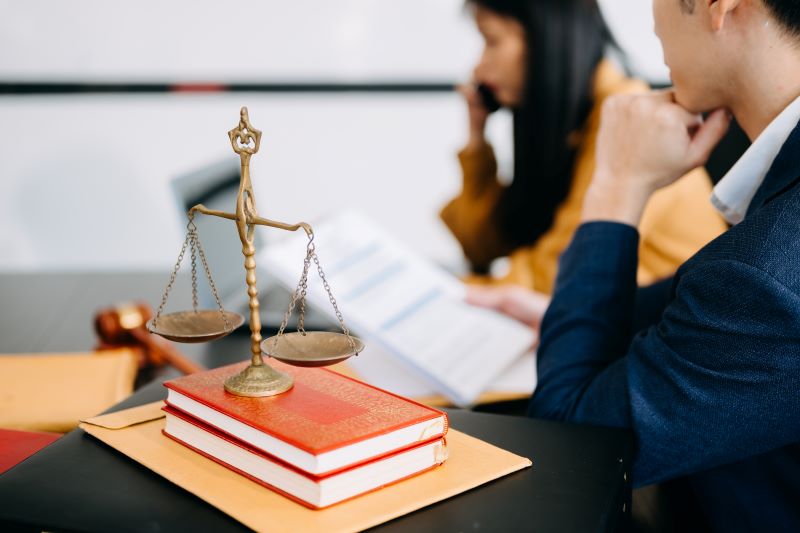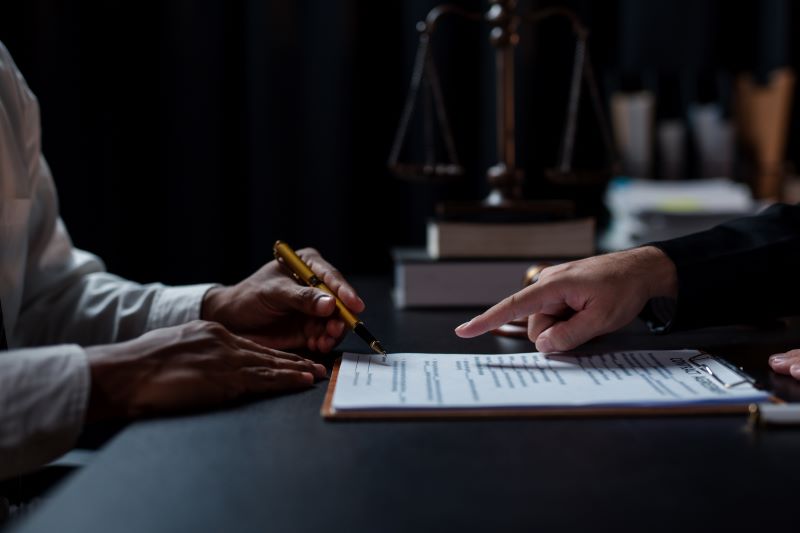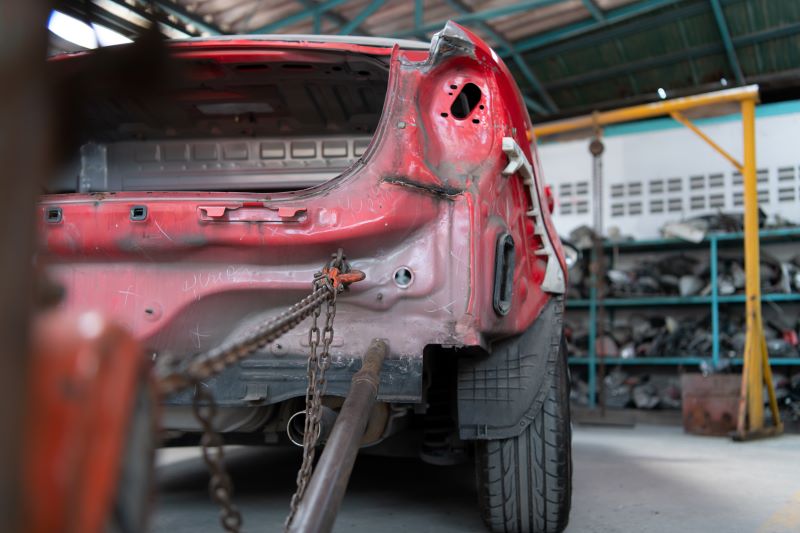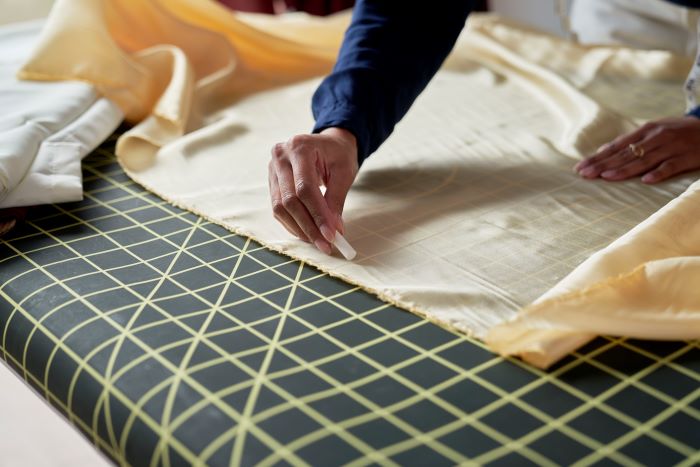Navigating the complex landscape of textile-related disputes necessitates a nuanced understanding of both industry-specific risks and the pertinent legal protocols. Personal injury attorneys, specialized in this sector, play a crucial role in mediating between affected parties and the justice system, ensuring that victims of textile injuries—ranging from chemical burns to equipment-related accidents—receive adept representation. Their expertise not only aids in accurately documenting and presenting claims but also in securing appropriate compensations. However, the strategies they employ and the challenges they face in such unique cases remain largely unexplored, raising questions about the depth and breadth of their involvement.
Key Takeaways
- Personal injury attorneys assess the validity and potential value of claims in textile-related injuries.
- They gather crucial evidence including medical records, expert testimonies, and workplace documentation.
- Lawyers negotiate settlements and are equipped to litigate if necessary, ensuring fair compensation.
- They provide specialized knowledge in regulatory compliance and safety standards within the textile industry.
- Attorneys help navigate the complex legal and insurance processes following a textile injury.
Understanding Abogados de Accidentes Bakersfield Textile Industry Risks
The textile industry, marked by its extensive use of heavy machinery and complex chemical processes, inherently encompasses a variety of occupational risks. These risks are further compounded by market fluctuations and global outsourcing, elements that introduce additional layers of complexity to the industry’s operational stability. Market fluctuations can lead to unpredictable workloads and rushed production schedules, increasing the likelihood of accidents due to inadequate training or oversight. On the other hand, global outsourcing often involves shifting production to locations with less stringent safety regulations, potentially exacerbating workplace hazards.
Analyzing these factors methodically, it becomes clear that both market fluctuations and outsourcing strategies not only affect the economic landscape but also directly impact worker safety. To mitigate these risks, companies must adopt rigorous safety protocols and provide comprehensive training to ensure that their employees are well-prepared to handle the unpredictable dynamics of the textile market. Additionally, a thorough understanding of both local and international safety standards is crucial for firms engaging in global outsourcing, to maintain consistent safety measures across all operational bases.
Hence, it is imperative for stakeholders in the textile industry to recognize and strategically manage these risks to safeguard their workforce and ensure sustainable operations.
Identifying Common Textile Injuries
In the textile industry, workers frequently face injuries stemming from chemical exposures, machinery accidents, and repetitive strain. To mitigate these risks, it is essential to implement stringent safety protocols and provide comprehensive training to all employees. Addressing these common injuries not only enhances worker safety but also reduces the legal liabilities faced by textile manufacturers.
Chemical Exposure Risks
Understanding the risks of chemical exposure in the textile industry is crucial for identifying common injuries among workers. These risks primarily manifest as occupational dermatitis and various respiratory hazards, directly linked to the frequent handling and inhalation of chemical agents used in fabric processing and dyeing.
Occupational dermatitis is a prevalent condition resulting from direct skin contact with chemical irritants or allergens. This type of dermatitis can range from mild irritation to severe skin conditions that might necessitate medical intervention and could lead to prolonged absenteeism from work. Preventive measures, including the use of appropriate personal protective equipment (PPE) and stringent safety protocols, are essential to mitigate these risks.
Respiratory hazards stem from airborne chemicals and particulates. Workers often face exposure to fumes from synthetic fibers or toxic byproducts of dyeing processes, which can lead to respiratory issues ranging from temporary discomfort to chronic respiratory diseases. Implementing comprehensive ventilation systems and ensuring that workers have access to respiratory protective gear are critical steps in safeguarding their health.
These chemical exposure risks underscore the necessity for regulations and proactive measures in the textile industry to protect workers effectively. Personal injury attorneys specializing in this sector play a pivotal role in advocating for affected individuals, ensuring they receive the necessary compensation and support for recovery and rehabilitation.

Machinery Accident Prevention
To effectively prevent machinery-related injuries in the textile industry, it is imperative to identify and understand the most common accidents associated with equipment use. This knowledge not only aids in developing targeted safety protocols but also enhances the effectiveness of safety training and equipment maintenance programs.
Key injuries often stem from:
- Entanglements: Workers’ clothing or limbs getting caught in moving parts.
- Cuts and lacerations: Sharp edges on machinery can cause severe injuries if safety guards are not properly maintained.
- Crush injuries: Occur when parts of the body are caught between rollers or other heavy machinery components.
- Impact injuries: Result from objects ejected by malfunctioning equipment, striking workers.
- Electrical shocks: Due to improper grounding or maintenance of electrical components on machinery.
Addressing these risks requires a methodical approach. Regular equipment maintenance is crucial to ensure that all safety features function as intended. Comprehensive safety training should also be mandated to educate workers on potential hazards and proper machine handling techniques. By integrating these practices, the textile industry can significantly mitigate the risk of machinery-related injuries, promoting a safer workplace environment. This strategic, analytical approach not only prevents injuries but also enhances overall operational efficiency.
Repetitive Strain Injuries
Repetitive Strain Injuries (RSIs) are prevalent among textile workers, often stemming from the industry’s demand for continuous, monotonous tasks. These injuries can manifest as carpal tunnel syndrome, tendonitis, and bursitis, significantly impairing the ability and efficiency of workers. The repetitive nature of tasks such as sewing, cutting, and weaving places continuous strain on specific muscle groups and joints, leading to chronic pain and functional limitations.
To address these occupational hazards, ergonomic assessments are crucial. These assessments analyze the work environment and practices to identify risk factors contributing to RSIs. By systematically evaluating how textile tasks are performed, specialists can recommend necessary adjustments that align with health and safety standards.
Furthermore, workstation modifications play a pivotal role in preventing RSIs. Adjustments such as ergonomic chairs, adjustable tables, and footrests can drastically reduce strain. Additionally, implementing tools designed to minimize force and repetitive motion can further safeguard workers’ health.
Personal injury attorneys specializing in textile-related disputes should advocate for these preventative measures. By presenting compelling evidence of the correlation between inadequate work conditions and RSIs, attorneys can persuade textile companies to prioritize worker health, thereby mitigating legal disputes and fostering a safer workplace.
The Role of Personal Injury Attorneys
Personal injury attorneys play a crucial role in advocating for clients who have suffered injuries due to textile-related incidents, ensuring that they receive adequate compensation for their losses. These legal professionals leverage their specialized knowledge of both the Abogados de Accidentes Bakersfield law and the intricacies of the textile industry to build strong cases for their clients. Their expertise extends beyond general legal training to include specific insights into the standards and practices of textile manufacturing and safety protocols.
Key roles include:
- Evaluating Claims: Attorneys assess the validity and potential value of a client’s claim based on evidence and industry standards.
- Gathering Evidence: They meticulously collect and analyze medical records, expert testimony, and workplace documentation.
- Negotiating Settlements: Skilled in settlement negotiation, attorneys strive to achieve the best possible outcome without proceeding to trial.
- Litigating Cases: When settlement is not possible, they are prepared to argue the case in court.
- Offering Guidance: Throughout the process, they provide legal and practical advice to help clients navigate the complexities of their cases.
The qualifications of an attorney are critical in determining the success of these tasks. A deep understanding of relevant laws and a strong capability in settlement negotiation are essential for ensuring that clients’ rights are effectively represented and protected in textile-related injury cases.
Legal Framework for Textile Disputes
Navigating the legal framework for textile disputes requires a robust understanding of regulatory compliance standards, which ensure that products meet safety and quality benchmarks. Additionally, protecting intellectual property rights is crucial for maintaining competitive advantage and fostering innovation within the textile industry. A thorough review of contractual obligations further underpins the legal strategies employed to resolve disputes effectively, safeguarding business interests and promoting fair trade practices.
Regulatory Compliance Standards
Understanding the legal framework’s regulatory compliance standards is crucial for resolving textile-related disputes effectively. These standards encompass a broad range of regulatory requirements that textile companies must adhere to, including environmental standards and import regulations. Compliance is not only about adhering to the laws but also about understanding how these regulations impact the operations and liabilities of a textile business.
The key standards in the textile industry that often become focal points in legal disputes include:
- Environmental Standards: Regulations concerning the discharge of industrial waste, use of non-toxic materials, and sustainable manufacturing processes.
- Import Regulations: Laws that govern the importation of textiles, including tariffs, quotas, and restrictions on certain substances.
- Safety Protocols: Mandatory compliance with safety standards to protect workers from hazardous conditions in textile manufacturing.
- Labeling Requirements: Accurate representation of material composition and country of origin, essential for informing consumers and for regulatory compliance.
- Quality Control Standards: Ensuring products meet certain performance criteria before they are marketed and sold.
A meticulous understanding of these regulatory aspects is essential for a personal injury attorney to effectively represent clients in textile-related disputes. By methodically navigating these compliance issues, attorneys can better advocate for fair practices and resolutions in the industry.
Intellectual Property Rights
Intellectual property rights play a pivotal role in the legal framework governing textile disputes, particularly in protecting designs, patents, and trademarks integral to the industry. In the competitive textile market, safeguarding these elements is not merely about maintaining creativity but is crucial for economic viability. Trademark disputes are often at the forefront of legal battles within this sector. A trademark not only identifies the source of the product but also protects the reputation and brand identity, distinguishing specific designs or logos from those of competitors.
Moreover, instances of design plagiarism are rampant in the textile industry, with distinct patterns, fabrics, and even functional innovations being illicitly copied and sold. Such acts not only dilute the original creator’s market but can also lead to significant financial losses and damage to brand integrity. An adept personal injury attorney specializing in textile-related intellectual property disputes can guide clients through the complexities of proving ownership and the originality of designs, navigating through the legal nuances that define intellectual property rights in textiles.
Contractual Obligations Review
Contractual obligations form the backbone of legal interactions in the textile industry, setting clear parameters for business conduct and dispute resolution. A meticulous approach to contract review and agreement enforcement is crucial in avoiding and managing disputes effectively. Personal injury attorneys play a pivotal role in navigating these contracts, ensuring all parties understand their rights and obligations, and that the terms set forth are equitable and enforceable.
In the realm of textile-related disputes, the complexities of contracts can be daunting. Here are reasons why rigorous contract review and robust agreement enforcement are indispensable:
- Risk Mitigation: Identifying potential risks and addressing them within the contract can prevent costly litigation.
- Clarity of Terms: Ensuring all terms are explicit to avoid ambiguities that could lead to disputes.
- Regulatory Compliance: Verifying that agreements comply with local, state, and international laws.
- Relationship Management: Clear agreements foster trust and long-term relationships between parties.
- Dispute Resolution: Establishing predetermined methods for resolving disputes can streamline potential conflicts.
In essence, the strategic review and enforcement of agreements not only protect businesses from legal pitfalls but also contribute to the industry’s overall stability and growth. Personal injury attorneys specializing in textile disputes are therefore critical in crafting, reviewing, and enforcing contracts that uphold the integrity of business transactions within the textile sector.
Steps to Take After an Injury
Immediately after sustaining an injury in a textile-related accident, it is crucial to seek medical attention to document the extent of your injuries and ensure proper care. This step is not only vital for health reasons but also forms the cornerstone of any legal claim that may follow. Medical documentation generated during this initial emergency response serves a dual purpose: it provides a factual basis for any subsequent medical treatment and establishes an official record of the injury, which is critical in legal proceedings.
Once immediate medical needs are addressed, it is imperative to notify your employer or the site manager of the accident, adhering to any existing protocols for workplace injuries. This notification should be made as soon as possible to not only comply with workplace policies but also to ensure the incident is logged officially, which can be important for both insurance and legal purposes.
Engaging a personal injury attorney at this stage can provide strategic guidance on how to navigate the complexities of your case. A skilled attorney can help interpret the medical documentation and frame your emergency response in a way that strengthens your legal position, ensuring that all necessary steps are methodically followed to maximize the potential for a favorable outcome.
Gathering Evidence for Your Case
Once medical and procedural steps have been taken, diligently gathering and organizing evidence becomes crucial in building a strong legal case for textile-related injuries. This phase not only establishes the foundation of your claim but also enhances the persuasiveness of your case in the eyes of the law.
A methodical approach to evidence collection involves various facets, from physical samples to digital footprints. Witness interviews are integral, providing firsthand accounts that might corroborate specific details of the incident. Similarly, surveillance footage can offer undeniable visual proof that supports the sequence of events as described by the plaintiff.
For effective evidence gathering, consider the following key actions:
- Secure Physical Evidence: Collect remnants of the textile or clothing involved, which may show defects or hazards.
- Document Injuries: Photograph all physical injuries to illustrate their extent and nature.
- Obtain Surveillance Footage: Access any available video that captured the incident, highlighting unsafe conditions or malfunctions.
- Conduct Witness Interviews: Identify and record testimonies from individuals who witnessed the event or have relevant information.
- Preserve Communication Records: Keep copies of all interactions with manufacturers, employers, or witnesses related to the injury.
These steps ensure a comprehensive gathering of evidence, crucial for substantiating your claims and moving forward effectively in your legal journey.
Navigating Compensation Claims
Navigating compensation claims in textile-related disputes requires a systematic approach to ensure that all potential avenues for recovery are thoroughly explored and addressed. When handling these claims, it is crucial to understand the complexities of insurance policies that may cover textile injuries. A personal injury attorney can dissect these policies to identify specific clauses that are pertinent to the case, ensuring that claims are filed correctly and within the stipulated deadlines.
The claim processes in textile-related injuries can be intricate, often requiring detailed documentation regarding the nature of the injury and its causation. An attorney with expertise in this field will methodically gather the necessary evidence, collaborating with medical professionals and industry experts to build a compelling case. This evidence is critical in substantiating the claim, demonstrating not only the extent of the injury but also how it directly results from the textile-related incident.
Moreover, a persuasive legal approach is indispensable for negotiating with insurance companies. These entities are often reluctant to dispense fair settlements, so a skilled attorney must adeptly argue the merit and severity of the claim, pushing for a compensation package that truly reflects the damages and losses incurred. This strategic negotiation is pivotal in achieving a just outcome for the injured party.
Long-Term Impact of Textile Injuries
The long-term impact of textile injuries can extend far beyond the initial trauma, often leading to chronic health issues and prolonged financial strain. When considering the comprehensive repercussions of such injuries, it becomes evident that the effects are not only physical but also psychological and economic. Individuals may face a long road to recovery, where the role of a knowledgeable personal injury attorney becomes crucial in devising effective compensation strategies.
The psychological effects of enduring an injury in the textile industry can be profound. Workers often experience:
- Chronic pain leading to psychological distress
- Anxiety about future employment and financial stability
- Depression due to prolonged recovery periods
- Post-traumatic stress disorder from the accident itself
- Decreased quality of life as a result of ongoing physical limitations
These factors underscore the necessity for well-thought-out compensation strategies that consider both immediate and long-term needs. A methodical approach to legal advocacy is essential, ensuring that victims receive adequate compensation to cover medical expenses, psychological counseling, and loss of income, potentially spanning several years. By securing comprehensive compensation, attorneys empower clients to focus on recovery and rehabilitation, which are vital for reclaiming their health and livelihoods.
Choosing the Right Attorney for Your Case
Selecting an adept personal injury attorney is pivotal for securing just compensation in textile-related disputes. The first step in this critical decision is to evaluate the attorney qualifications meticulously. An attorney specializing in textile injuries should not only have a robust understanding of personal injury law but should also possess a deep insight into the textile industry’s specific challenges and regulations. This specialized knowledge is crucial for navigating the complexities of such cases and for articulating the subtleties of the injury’s impact on the client’s life.
Equally important is understanding the attorney’s fee structures. Most personal injury lawyers work on a contingency fee basis, meaning they receive a percentage of the settlement or judgment. However, the specifics can vary significantly. Prospective clients should seek clarity on what percentage is taken and under what circumstances additional fees might be incurred. This transparency ensures there are no financial surprises and helps in making an informed decision.
When choosing an attorney, methodically analyze their track record, client testimonials, and readiness to handle cases of similar magnitude and nature. This systematic approach will aid in selecting a lawyer who not only has the requisite qualifications but also the dedication to pursue your interests vigorously and effectively.
Conclusion
In conclusion, a personal injury attorney acts as a skilled navigator through the labyrinthine complexities of textile-related legal disputes. By weaving together a robust tapestry of evidence and articulately presenting the intricacies of the case, these legal experts ensure that the scales of justice tilt in favor of those injured. Thus, the injured parties are not merely threads lost in the fabric of legal proceedings but are given a voice to claim the compensation rightfully theirs.


